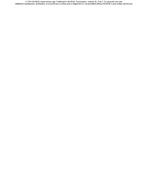When considering solar heating for commercial buildings, it is important to recognize that historically, solar collectors have been developed to provide comfort heating for residential-type buildings. The early experimenters, as well as many of todays’ inventors, have used single-family-type residences to serve as laboratories for design and application of solar heating equipment and systems. Consequently, many of the concepts, which are now considered conventional wisdom, are unique to residential buildings, but the concepts may be grossly incorrect when applied to larger commercial or industrial buildings.
Most commercial buildings are intended to operate only during occupied, daylight hours. During the rest of the time — nights, weekend and holiday operation, when the building is unoccupied — the structure is non-productive. Because of this, the commercial building is designed for use primarily during the daylight periods which happens to be the period when solar·energy can be obtained. In comparison the residential building must additionally be designed for extensive nighttime utilization when solar energy cannot be collected. When selecting a system for heating, ventilating, and air conditioning of commercial buildings, greatest emphasis should be given to the occupied daylight operation, which is the productive period, the purpose for which the building is to be constructed, and the period of greatest energy consumption. Once the optimum system has been identified by comparison with alternatives, it can then be analyzed for operation during the non-productive periods to assure satisfactory performance. Given an optimum system, a further economic analysis becomes an academic exercise. However, before the economic analysis should even be initiated, it is essential to recognize certain fundamental concepts and incorporate these fundamentals in any design. The economics vary from project to project, but the fundamentals to be incorporated remain unchanged.
Citation: Symposium, ASHRAE Transactions, Volume 85, Part 1, Philadelphia, PA
Product Details
- Published:
- 1979
- Number of Pages:
- 10
- File Size:
- 1 file , 540 KB
- Product Code(s):
- D-PH-79-02-3


